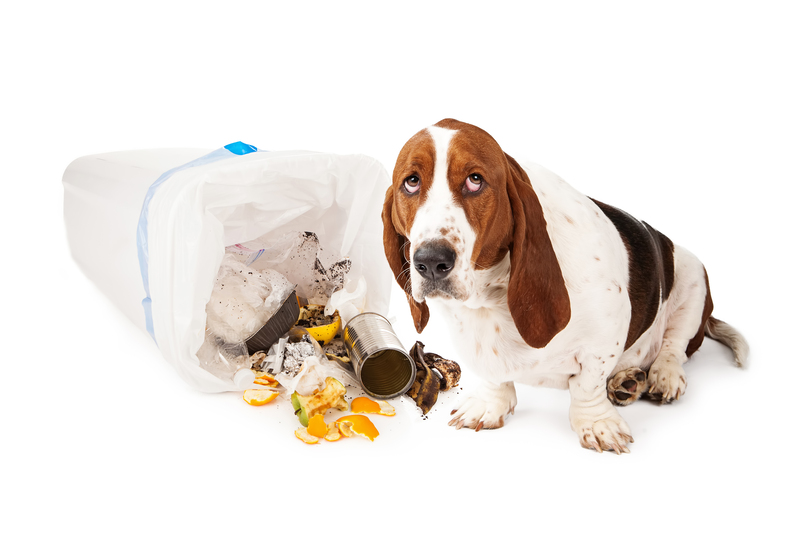Exploring Green Alternatives in Packaging and Cardboard Disposal
In an era where environmental consciousness is becoming increasingly essential, businesses and consumers alike seek sustainable green alternatives for packaging and responsible cardboard disposal. Traditional packaging solutions and improper waste management have significantly contributed to the global waste crisis. As a result, industries are innovating and transitioning towards eco-friendly options that minimize environmental impact. This comprehensive article delves into the latest trends, techniques, and best practices for eco-friendly packaging and environmentally responsible cardboard recycling.

Why Green Alternatives in Packaging Matter
The packaging industry has long relied on single-use plastics and other non-biodegradable materials, leading to overflowing landfills and increased ocean pollution. By embracing green alternatives in packaging, companies can drastically reduce their ecological footprint and foster a more circular economy. Several key reasons underscore the importance of eco-friendly packaging and responsible cardboard disposal:
- Reduces landfill waste: Sustainable packaging materials break down faster and take up less space in landfills.
- Conserves natural resources: Recyclable and biodegradable options require fewer raw materials.
- Minimizes pollution: Compostable and recyclable packaging cuts emissions and prevents toxins from leaching into soil and water.
- Enhances brand reputation: Consumers increasingly seek brands with solid eco-credentials, making green packaging a market differentiator.
- Meets regulatory requirements: Governments worldwide are introducing stricter laws on packaging waste, encouraging proactive compliance.
Popular Green Packaging Options
There are numerous green packaging solutions available today, meeting diverse industry needs while protecting the planet. These alternatives range from innovative bioplastics to upcycled fibers. Here are some leading eco-friendly packaging materials and methods:
1. Recycled Cardboard and Paper
Recycled cardboard packaging is among the most accessible and effective ways to reduce waste. Utilizing already-used fibers, recycled cardboard and paper-based packaging demand fewer resources and energy to produce than their virgin counterparts. Many businesses also incorporate minimum recycled content mandates in their packaging supply chain to support a closed-loop recycling ecosystem.
- Kraft paper and corrugated boxes provide sturdy, biodegradable protection for shipped goods.
- Paper pulp molds replace polystyrene foam in cushioning and inserts.
- Soy-based inks on paper packaging reduce the presence of toxic chemicals.
2. Biodegradable and Compostable Packaging
Biodegradable packaging materials, such as plant-based bioplastics and starch blends, break down naturally in compost, returning nutrients to the soil. Compostable packaging is particularly effective for food applications, reducing landfill loads and generating nutrient-rich humus.
- PLA (Polylactic Acid) bioplastic: Derived from corn starch or sugarcane, this material decomposes in industrial compost facilities.
- Bagasse: A fiber left after extracting juice from sugarcane, transformed into compostable trays and boxes.
- Mushroom packaging: Mycelium-based materials grow around a mold and serve as shock-absorbing packaging, decomposing entirely within a few weeks.
3. Reusable Packaging Solutions
Reusable packaging options reduce the demand for new materials and minimize packaging waste. Systems for reuse include:
- Returnable crates or pallets commonly used in shipping produce and beverages.
- Refillable containers for household products like soaps and cleaning supplies.
- Durable tote bags and insulated shipping containers that can be sent back, cleaned, and reused.
4. Edible Packaging
Pioneering companies are testing edible packaging made from rice, seaweed, or potato starch. While this technology is still emerging, it has the potential to revolutionize single-use food packaging by eliminating waste altogether.
Innovative Trends in Green Packaging
Beyond alternative materials, progressive brands are also exploring innovative green packaging strategies and technologies to further reduce their environmental impact:
- Minimalist packaging design: Eliminating unnecessary components and reducing overall material usage.
- Plantable packaging: Packaging embedded with seeds, which can be planted after use to foster greenery.
- Smart labels and tracking: Utilizing QR codes and apps that provide detailed recycling instructions.
- Water-based adhesives and coatings: Replacing toxic glues with environmentally benign alternatives, easing cardboard recycling processes.
- 3D-printed packaging: Custom-fit protective solutions made from recycled or biodegradable inputs, minimizing excess material.
Sustainable Cardboard Disposal Practices
As cardboard packaging is one of the most widely used materials for shipping and retail, understanding the best disposal and recycling practices is crucial for environmental sustainability. Here are the main eco-friendly cardboard disposal methods:
1. Curbside Recycling
Most cities and municipalities offer curbside recycling for cardboard boxes and paper packaging. To maximize recycling efficiency:
- Flatten all boxes to save space in bins and recycling trucks.
- Remove any plastic tapes, labels, and non-paper inserts.
- Ensure the cardboard is clean and dry - wet or food-soiled cardboard contaminates recycling batches.
2. Industrial Composting
Uncoated and ink-free cardboard can be composted in industrial facilities or, in smaller amounts, in home compost piles. Shredding the cardboard increases surface area, speeding up decomposition.
3. Reuse and Repurposing
Before recycling, consider how used cardboard can be repurposed:
- DIY storage organizers and crafts.
- Animal bedding in shelters and barns.
- Sheet mulching in home gardens to suppress weeds and retain moisture.
- Protective wrapping for moving or storage.
4. Partner with Commercial Recycling Services
Businesses generating large volumes of cardboard waste benefit from direct relationships with recycling contractors. These providers may offer on-site balers, regular pickups, and bulk recycling rebates, streamlining the corporate cardboard recycling process.
Challenges to Adopting Green Packaging and Responsible Cardboard Disposal
While the shift toward eco-friendly packaging and better cardboard disposal is accelerating, several challenges remain:
- Cost considerations: Biodegradable and compostable alternatives often carry higher upfront costs due to non-scale production or material innovation.
- Performance limitations: Some green packaging materials may not match the durability, moisture resistance, or shelf life provided by traditional plastics.
- Consumer education: Users may be unsure which green packaging is recyclable or compostable, leading to contamination of waste streams.
- Recycling infrastructure gaps: Regions without robust collection or processing facilities will struggle to recycle cardboard and bioplastics efficiently.
Best Practices for Businesses and Individuals
Whether you're a manufacturer, retailer, or concerned consumer, there are actionable steps to support the growth of green packaging alternatives and improve cardboard disposal outcomes:
- Conduct a packaging audit to identify unnecessary materials and packaging inefficiencies.
- Source third-party certifications like FSC (Forest Stewardship Council) for sustainable paper and cardboard.
- Implement take-back programs to retrieve and recycle packaging from customers.
- Educate staff and consumers about proper sorting, recycling, and composting protocols.
- Promote reusable options both in B2B and retail sales channels.
- Partner with eco-packaging suppliers that prioritize ethical and transparent sourcing.

The Future of Green Packaging and Cardboard Disposal
Looking forward, the evolution of green packaging alternatives is expected to accelerate as technology advances, consumer preferences evolve, and regulatory frameworks tighten. Circular economy principles will guide innovation, emphasizing reuse, recycling, and sustainable resource management. Cardboard, as a recyclable staple, will continue playing a pivotal role, especially as more companies upcycle fibers and invest in renewable energy-powered recycling facilities.
From **edible films** and high-performance biopolymers to AI-driven waste sorting, tomorrow's sustainable packaging landscape promises to be both efficient and earth-friendly. Organizations that proactively invest in responsible cardboard disposal and versatile green solutions will be best-positioned to lead this revolution.
Conclusion: Making the Switch to Green Packaging and Responsible Cardboard Disposal
Choosing environmentally friendly packaging and adopting efficient cardboard recycling practices are crucial steps in combating the global packaging waste crisis. By pursuing both incremental and transformative changes, individuals and businesses alike can minimize their environmental impact, build brand loyalty, and contribute to a healthier planet.
As consumers become more aware and governments enact stricter rules on single-use packaging, the demand for sustainable solutions will only grow. By exploring, adopting, and continuously improving green alternatives in packaging and cardboard disposal, every stakeholder can help move society closer to a zero-waste future.
Are you ready to make the switch? Start exploring environmentally responsible options today--because every green choice matters.